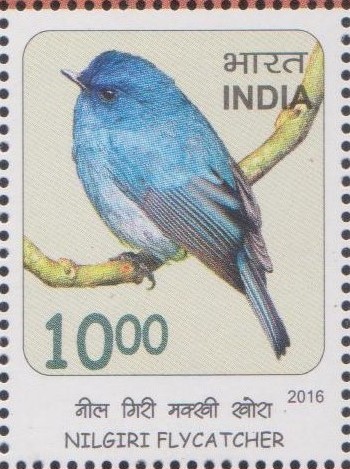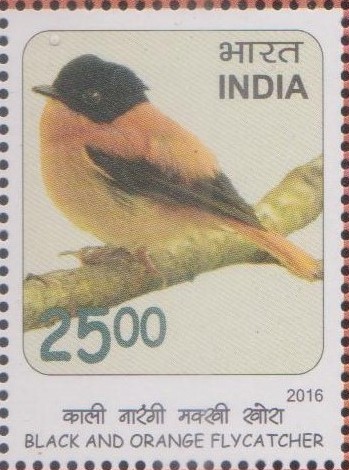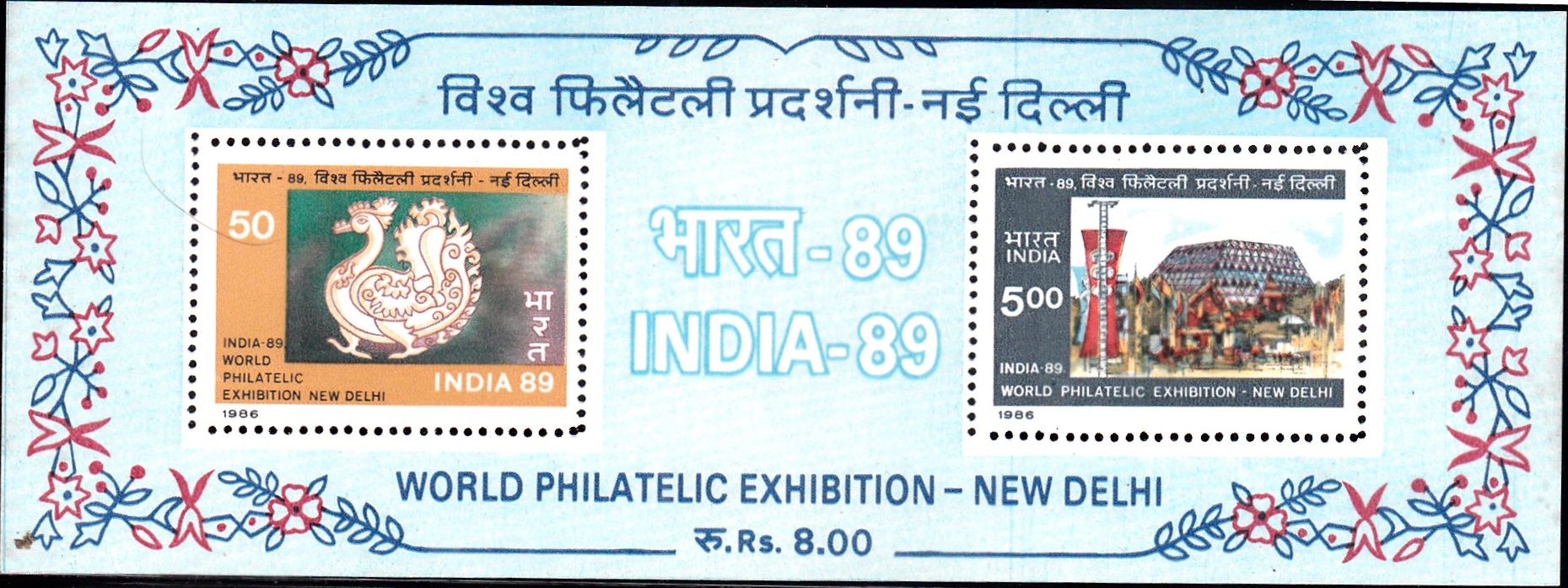
Near Threatened Birds of India 2016 : Series 1
A Miniature Sheet consisting of 4 nos. of commemorative postage stamp on the Series 1 : Near Threatened Birds : Nicobar pigeon, Nilgiri flycatcher, Black–and–orange flycatcher and Andaman woodpecker :




 Issued by India
Issued by India
Issued on Oct 17, 2016
Issued for : The Department of Posts is pleased to release a set of four stamps on the following four birds under the Category of Near Threatened (NT) species.
Credits :
Stamp/Sheetlets/Miniature Sheet/FDC/Cancellation Cachet : Smt. Nenu Gupta
Type : Miniature Sheet, Mint Condition
Colour : Multi Colour
Denomination : 500, 1000, 1500 & 2500 Paise
Stamps Printed : 0.3 million each (in the form of sheetlets)
Miniature Sheet Printed : 0.1 million
Printing Process : Wet Offset
Printer : Security Printing Press, Hyderabad
About :
- Birds are found all over the world – Antarctic and Arctic to Deserts of Sahara and Kalhari, Tropical South America and Africa to Himalayan forest and Pelagic islands. In India, there are around 1200 species of birds. Birds are Warm blooded animals – body covered with feather – which can fly, swim and walk – lay eggs.
- The International Union for Conservation of Nature and Natural Resources (IUCN) which is an international organization working in the field of nature conservation and sustainable use of natural resources has divided the Birds into Categories. The IUCN issues a Red List, which assesses the conservation status of species worldwide. In this Red List, the IUCN categorizes species into nine different categories on the basis of rate of decline, population size, area of geographic distribution, and degree of population and distribution fragmentation. One such Category of Birds is “Near Threatened” (NT), wherein the Birds which are likely to become endangered in the near future come.
- Nicobar Pigeon / Caloenas nicobarica (Linnaeus 1758): This species is classified as Near Threatened because throughout its wide range it is thought to be declining as a result of capture for food and the pet trade, habitat destruction and predation by introduced mammals. Nicobar Pigeon is a small island specialist; it occurs on the Andaman and Nicobar Islands. It is the only living member of the genus Caloenas. The global population size has not been quantified, but the species is described as generally scarce to rare, although locally commoner on smaller islets. It normally breeds, often in dense colonies, on extremely small, wooded offshore islands and forages in situ or on adjacent mainland (or larger island) areas up to at least 500 m. It prefers uninhabited and remote islets with original forest vegetation, though these must be close enough to large areas of lowland rainforest which it requires for foraging. Trapping for food, the pet trade and perhaps for their gizzard-stones is a serious threat. The clearance of small islands for plantations and the adjacent areas of lowland forest which it requires for foraging must have reduced numbers. Predation by rats Rattus spp., cats and other alien predators at nesting grounds can affect large numbers of birds due to the colonial nature of the species.
- Nilgiri Flycatcher / Eumyias albicaudatus (Jerdon, 1840): This species is listed as Near Threatened because it occupies a moderately small, fragmented range, and is likely to be experiencing a continuing decline owing to a number of emerging threats associated with human population increase; it therefore almost meets the requirements for listing as threatened under criterion of IUCN. However, little is currently known about the population size and specific threats to this species. This species is an endemic resident in the Western Ghats of southern India, where it can be common in suitable habitat. While its range is small, its tolerance for disturbed habitats suggests that it is not immediately threatened by habitat modification. The population size is unknown, but the species is described as common, especially at higher elevations. The population is suspected to be in decline owing to ongoing habitat destruction. It occurs in evergreen hill forests and woodlands favouring forest edges, clearings, dense vegetation near streams, shade coffee and cardamom plantations and sholas, from 600 m to the summits, being most numerous above 1,200 m. It forages alone or in loose association with other flycatchers in the lower storeys of vegetation on insects and berries. It breeds from February until June. An increasing human population has led to increased illegal encroachment into Western Ghat forests, livestock grazing and the harvesting of fuel wood, notably for tea factories and huge quantities of forest products such as bamboo and canes.
- Black-and-orange Flycatcher / Ficedula nigrorufa (Jerdon, 1839): This species occupies a moderately small range, within which a number of potential threats are emerging. It is currently considered Near Threatened as a result, but continued monitoring of the population and threats to it is necessary. It is an endemic resident in the Western Ghats of southern India, where it is locally common. The population size is unknown, but the species is described as common or locally common. The population is suspected to be in decline owing to ongoing habitat destruction. It inhabits shola forests with dense undergrowth (bamboo and rattan) and plenty of leaf-litter, cardamom and coffee plantations, and moist thickets in ravines from 700 m to the highest summits. It forages low down and on the ground, hopping in damp, dense undergrowth. Breeding is between March and July. While its range is small, its tolerance for modified habitats suggests that it is not immediately threatened. However, an increasing human population has led to increased illegal encroachment into Western Ghat forests, livestock grazing and the harvesting of fuel wood, notably for use in tea factories, and huge quantities of forest products such as bamboo and canes. Furthermore, hydroelectric power development and road-building are causing reductions in forest cover in some areas. These factors require monitoring as, left uncontrolled; they will threaten the area’s endemic avifauna.
- Andaman Woodpecker / Dryocopushodgei (Blyth 1860): This species has a small range, in which it is likely to be affected by habitat loss and degradation, probably more so in the near future. However, its population is not regarded as severely fragmented or restricted to a few locations. It is therefore considered Near Threatened, and should be carefully monitored. It is endemic to the Andaman islands, India, where it is a common resident. They are generally found in tropical evergreen forests of this archipelago. They forages mainly on trunks of large trees or on main branches. The population size of this species has not been quantified, but it is described as common. Trend data are lacking, but this species apparently remains common and widespread. It is likely to have declined to some degree as a result of habitat loss. This species occurs in evergreen forest, as well as in open areas with sparse patches of taller trees. It occurs mainly in the lowlands. Although forest remains fairly extensive on the Andamans, the human population on larger islands is rising rapidly and habitat is consequently under pressure from agriculture, grazing and logging.
- Text : Based on the material available on internet.







